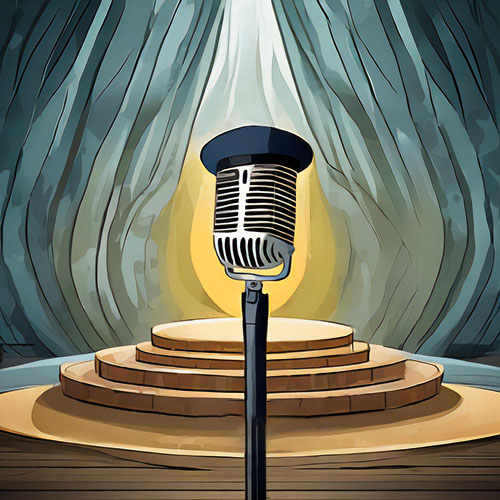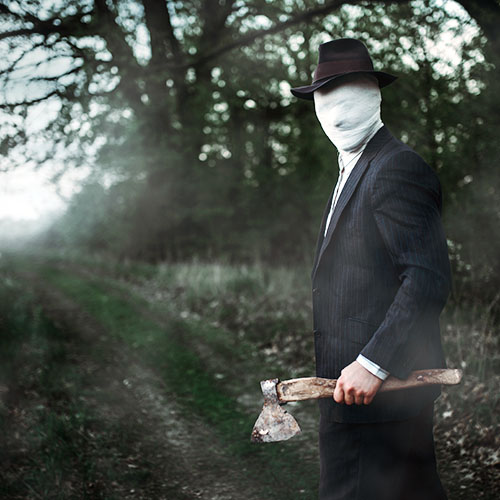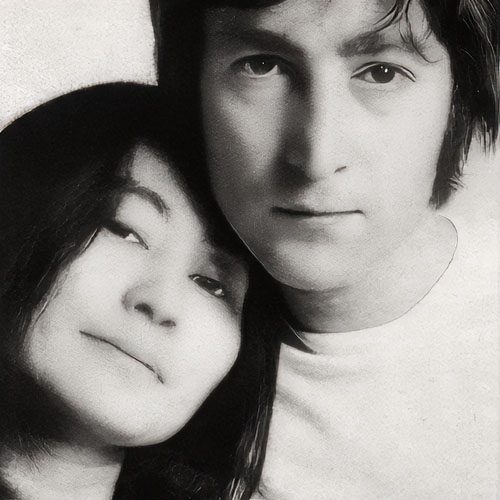More people are tattooing now than at any other time in history. The culture is everywhere — on clothes, on billboards, and on energy drinks. In the roughly eight square miles of Hollywood, there are more than 120 tattoo shops. In 1983, there were only three.
Tattoo You
But believe it or not, this is not the first time in our nation’s history that tattooing was popular. It was all the rage between the 1890s and the first two decades of the twentieth century. I know that might be surprising, as we do not see it in our history books. But there weren’t computers, air travel, personal cameras, interstate highways, etc. If your great-great-grandmother got a butterfly tattooed on her ass, she couldn’t take a picture of it with her cellphone and post it to her Facebook page. Chances are, it was her secret.
Trixie Richardson, a heavily tattooed woman and tattoo artist from the 1920s, said she inked 10,000 tattoos in the summer of 1925 on the Jersey Shore. That’s a lot of tattoos! Bear in mind that, back then, despite ads of the time claiming tattooing was “electric, scientific, and painless,” it was anything but painless, just like today. However, that was before the Harrison Act, so topical cocaine solutions were widely available. Now, we use lidocaine gel.
In those days, clothing companies were visiting Manhattan’s seedy Bowery, which was a huge epicenter of tattooing, to get designs from tattooers to put on clothes. Does that sound familiar? From what can be learned by what little is documented about this, a lot of the garments were swimwear, and the designs picked were by Lew Alberts (who was a wallpaper designer before he was a tattooer) and Charlie Wagner (known as Professor Wagner — a lot of tattooers called themselves “Professor,” a nod to that era’s scientific revolution).
‘“Nice” women were not showing even a little leg back then — good spank material was a glimpse of some girl’s ankle — so people weren’t exactly showing off their tattoos.’
Today, many customers want tattoos that movie stars and rap artists have, another trend that’s straight out of history. A hundred years ago, English tabloids helped bring the tattooing fad to a fever pitch when the two sons of the then-Prince of Wales (Edward VIII and George VI, who both later became king) were tattooed in faraway Japan. Other European monarchs followed suit. The British princes both got dragons, which was publicized in such tabloids as The National Police Gazette (the National Enquirer of the time). The back of that magazine was full of ads for tattooers. Likely because of that press, some of the first travel brochures for Japan listed the addresses of Japanese tattooers.
Some people back in the day got their bodies tattooed so they could join the circus as a sideshow act. St. Louis tattooer Bert Grimm inked a whole family and received excellent Missouri property as payment. That family went off and joined a traveling circus in pursuit of fame and fortune. Circuses, at one time, were the only places people in rural areas could get tattoos. Also, it was after seeing the circus that many future tattoo artists decided on that career. Owen Jensen, for instance, saw Buffalo Bill Cody’s Wild West show in Utah in 1911, and received his first exposure to the art form. He went on to tattoo for the next 60 years, and is still one of the best-known old-timers of the twentieth century.
Why is so little known about the history of tattooing in America? For one thing, “nice” women were not showing even a little leg back then — good spank material was a glimpse of some girl’s ankle — so people weren’t exactly showing off their tattoos. Also, it was a scandalous enough career choice that many tattooers changed their names so as not to shame their families. Times have changed — these days, I have soccer moms coming into the shop showing me their daughters’ drawings, hoping the girls can become the next Kat Von D.
The lack of personal cameras is a big reason why we don’t see how popular tattooing was in the beginning of the twentieth century. In fact, tattooers believe that fellow artist Bert Grimm invented the photo booth. Grimm had a shop in St. Louis for years, and also owned a photography studio right next door, probably out of a necessity to document his tattoos. Because of this, more photos survive of his work than any other tattooer of his generation.
Until about 15 years ago, the only information about the history of tattooing was oral history. The tricks of the trade were guarded fanatically. Tools and inks were all handmade, and what few suppliers there were, were kept secret. Buying equipment came with other challenges: Professor Charlie Wagner received an order for a tattoo machine from an aspiring artist, and he sent the machine unassembled. When the customer complained, Wagner wrote back, “You should know how to assemble it if you want to know how to use it.”
Tattooing popularity ebbs and flows. When wars broke out (the Spanish-American War, and the big ones that they numbered), shops popped up everywhere there were sailors and soldiers. Slogans like “Remember the Maine” and “Remember Pearl Harbor” were constantly inked — similar to the Twin Tower memorials we did a decade ago. Maybe that gives you something to think about while you drink an energy booster with a few sparrows and the homeward-bound banner on the label — it’s really nothing new. That’s one of the things I first learned as a young tattooer — that we’re copiers; it has all been done before.
Shane Enholm has been tattooing for almost 30 years, after being taught by legendary John “Horse” Sandler, who also taught Enholm how to rob banks. They both ended up in prison, where Enholm served eight years for 29 bank robberies. He was released 17 years ago, and for the past seven years has tattooed at Santa Clarita Tattoo in California.
So You Wanna Get A Tattoo
How do you choose a tattooer? With the wide availability of tattoo equipment, you have people tattooing everywhere. But just because some guy is sitting in a shop doesn’t mean he’s good. Remember, you are the most important person in this situation; without the customer, tattooers are no-where. A lot of the “artists” that now plague our industry can tattoo, but you may not get the tattoo you want. You’re going to get the tattoo that the artist wants to display on Facebook and leave as a monument to himself. These “monument builders” may be good at application, but this is your life and your body. You may as well put curtains over the counter and theater seats in the waiting room for the “performance” some of these guys give. So watch out — if a tattooer makes you feel as if you are not the most important person in the design decision, walk away.
The biggest problem we face as tattooers is not spreading hepatitis; it’s fame and egos. So many tattooers now think they’re going to be, or are already, famous.
I just laugh, because all we are doing is putting colored scabs on people — we ain’t curing cancer. And nothing we are doing has not already been done before; this is an art form based on copying.
So, don’t look for your artist in high-end shops. There are good shops in a lot of out-of-the-way places; don’t look only in Hollywood or New York City. Some of the best tattooers in the world don’t have their names in lights; they’re too busy working, drawing, living real lives. Look at their portfolios, which don’t need to be filled with full-bodysuit pictures, just regular tattoos. See if they can line, shade, and color. The subject matter is a different issue, but if you see a tattoo in a portfolio that’s similar to what you want, you’re that much closer to getting it. A good tattooer is versatile and should be able to do whatever you want.
Another big fallacy is that you shouldn’t pick a design off the wall. Customers think that if they pick their design off the wall, it’s not original, but then they walk in with a printout from a Google image search. Are you fucking kidding me? Most of the designs on my shop’s wall were painted by my friends, and maybe only five shops in the whole world have them, but a Google search is more original?
Now, the price: You don’t want to get robbed, but how much did you spend on those jeans? Those shoes? Are you gonna bargain-shop for something that you’re going to take to the grave with you? Figure on spending between $150 and $500. That ain’t much for a lifetime. Remember, no matter what you see on reality shows or the internet, tattooing is just a service industry. However, you should listen to the advice of your artist — that’s why you need to feel comfortable, welcome, and important.
With eight out of ten people between the ages of 18 and 26 getting tattooed, maybe the two who don’t get them are the real rebels now. I mean, it’s not scary to see someone covered in tattoos anymore. It’s common, and for me, it’s sad. People have no room left on their bodies by the time they’re 26. I’m almost 50. I hand-poked my first tattoo when I was 12, and I still have half my body left. I’ve got a lot of living to do yet, ya dig? This won’t be good for my business, but maybe the best advice I can give you is to stay away from tattoos altogether.
The Tattoo Tramp-Stamp Myth
Is it true that if a girl has a “tramp stamp” tattoo she’s promiscuous? I also heard that a tramp stamp means she’s into anal or doggie-style.
Those rumors are ridiculous and untrue. Yet somehow they’re out there and people believe them. And it’s not just here in the United States. In the U.K. and Europe, a lower-back tattoo on a woman is termed a “slag tag.”
The myth that a lower-back tattoo is code for liking anal sex sounds a lot like the rumors that went around a few years ago about teens wearing color-coded “sex bracelets” to signal their willingness to engage in various sexual acts. That was more or less an urban legend.
I also wonder if mainly young people hold the notion that a tramp stamp signals promiscuity. I re-member when lower-back tattoos became popular, in the nineties, when tattoos of all kinds went main-stream. The lower back was a convenient place for women to get inked, because they could hide it easily under business attire, or choose to reveal it by wearing the hip-hugger jeans that were in style. These tattoos were considered sexy, but not particularly slutty.
Because they were so popular, plenty of strippers and porn stars got them as well. Of course, their tattoos are more visible. I suspect that young people who missed the genesis of the fad might consider these tattoos a “stamp” of promiscuity just because they see them on scantily clad and nude women — not realizing that many of their teachers, bosses, and friends’ moms have “tramp stamps,” too.
We are pretty sure slut-shaming has fallen out of style, although that could be just because of the circles in which we run. In our world, if you’re NOT a tramp, people advise you to see a doctor. … Now the original publication had a bunch of tattoed women pictures with it as you might imagine, but we decided to add a quick gallery of our own, featuring Lacey London and Suttin, already featured in this more modern digital pages. Now we have no idea if any of the women shown here would qualify as tramps, truth be told, but we have more than a few folks around willing to try and find out.































